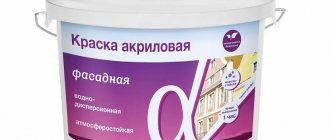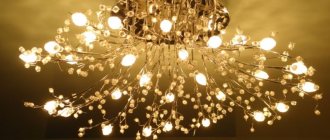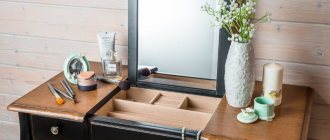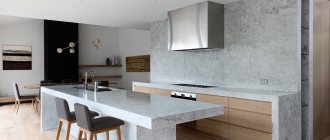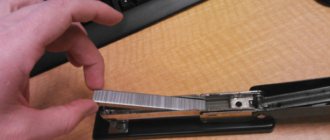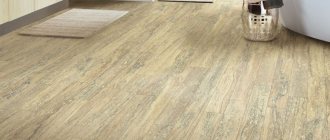Liquid glass: history and composition
Even if you are not involved in construction, you have come across liquid glass more than once in your life, because it is a well-known silicate glue. Surprisingly, this glue was invented more than 200 years ago, and to this day its composition remains unchanged.
The inventor of liquid glass is the German scientist Jan Nepomuk von Fuchs, who combined silicic acid with alkali silicates. As a result, a transparent viscous mixture was born, which, when hardened, turned into a solid transparent substance.
In the old days, glass melting furnaces were used to produce liquid glass. In them, quartz sand was melted under the influence of high temperatures, mixing it with coal and sodium sulfate or, alternatively, with soda. Today, for the industrial production of liquid glass, an autoclave is used - a specialized apparatus that combines quartz sand with alkalis under high pressure and shifts the boiling point of the mixture upward, thereby ensuring higher physical properties of the material.
Now ask yourself why, even after 200 years, liquid glass remains one of the most popular materials in the construction industry? Obviously, the whole point is in its unique properties and the versatility of its application. Let's take a closer look at them.
What brands of liquid glass are there on the Russian market?
For the convenience of our readers, we will try to make a rating of the brands of liquid glass manufacturers represented on our market. We are not trying to find the best liquid glass, we share information for thought, and everyone draws their own conclusions.
Pouring liquid glass onto a wooden table
Popular brands
So, on the Russian market you can easily find both domestic and foreign brands, among which the following stand out: Goodhim, Body Glass, Ceramic Pro, Glass Guard, H9, Hi Tech, Krytex, Liquid, Nano-Tech, Sappolab, Silane, Silane Guard, Soft-99 and Willson Guard. This set of brands will be enough for you to choose the material you need that can satisfy your needs.
In Russia, the production of liquid glass is controlled by GOST 13078-81 Sodium liquid glass. Technical conditions. Wilson Guard, aka Badi Glass or Silan Guard, is a Japanese car polish that has an original composition, which you can read about if you know the Japanese writing on the packaging.
What to choose for construction?
Nano Hi-Tex is a smartphone coating that protects the screen. Actually, Silan and Nano Tex have nothing to do with construction, as well as Ceramik Pro N9, Critex, Sappolab, etc. – these are all car polishes, car cosmetics, coatings for smartphone screens, etc. At best, you can use them to practice papertol, but adding such materials to concrete is too expensive and impractical.
GOODHIM is a Russian brand that produces high-quality liquid glass for construction at its own plant using the most modern developments, including its own. Here the price-quality ratio will be optimal.
Characteristics of liquid glass
Let's see what properties liquid glass has:
- Hydrophobic (perfectly repels moisture, protecting other materials and structures from the destructive effects of water);
- Antistatic (neutralizes static electricity);
- Fireproof (does not burn, protects treated surfaces from fire);
- Thermal insulating (perfectly retains heat);
- Antiseptic (actively fights fungi and mold, prevents their spread);
- Properties of the hardener (excellently fills cracks and pores in various surfaces, from concrete and stone to wood).
Popular manufacturers
High-quality versions of car polishes are produced by the world's best manufacturers:
- Japanese company Willson. Willson liquid glass is available in a wide range and configuration;
- Japanese corporation SOFT99 offers various options for polishes;
- Korean manufacturer Gyeon has developed special kits for applying products in a shorter time;
- Taiwanese company Nanoshine LTD.
They all offer interesting products that vary in cost and purpose.
Types of liquid glass
As mentioned above, the basis of liquid glass is a silicate solution. Depending on which alkaline additive predominates in the composition (sodium silicate Na2O(SiO2)n or potassium silicate K2O(SiO2)n), the resulting product - sodium or potassium liquid glass - depends. In isolated cases, manufacturers produce liquid glass based on lithium silicate Li2O(SiO2)n. Let's look at the two main types that you can find on the shelves of construction supermarkets.
Liquid sodium glass
This material is a thick liquid with a slight grayish tint. This product is famous for its astringent properties, thanks to which excellent adhesive solutions and mixtures for waterproofing are prepared on its basis. If you need to give additional protection to the foundation, protect the basement from moisture penetration, increase the strength of the concrete structure and make it fireproof, sodium liquid glass will be the best choice.
Liquid potassium glass
An alternative to the sodium composition can be potassium silicate. True, this viscous, viscous, transparent liquid with a greenish tint has a higher cost. Why? Simply having all the characteristics of sodium silicate, potassium-based liquid glass is an insurmountable obstacle to bacteria and fungi, successfully resists the effects of acids and reliably protects any surface, including wood, from rain, fog and other atmospheric influences. In addition, this material is used for the manufacture of varnishes and paints, giving them a characteristic glossy shine.
Material composition
The polymer material is an aqueous solution of glassy silicates. Sodium liquid glass has high fire retardant properties. Potassium – characterized by friability and increased hygroscopicity. A high degree of adhesiveness in combination with mineral additives contributes to the formation of a strong structure of the substance. This ensures reliable protection of treated surfaces from ultraviolet radiation and moisture.
However, the formula of liquid glass may change: there are options with lithium silicates. This material is often used as a thermostat. Changing the dosage of components changes the physical and chemical properties of the material and its performance characteristics. This feature significantly expands the scope of application of liquid glass.
Application areas of liquid glass
It is not surprising that, having such a variety of properties, liquid glass is used in a wide variety of industrial sectors. For example:
- Ferrous metallurgy. This material is often used as a binding component. It is sprayed onto welding electrodes and is also used in the manufacture of casting molds and ceramic fluxes.
— Mechanical engineering production. Liquid glass is used for delicate joining of parts, as well as for the preparation of non-stick paints.
— Construction industry. Production of heat-resistant materials (concrete and mortars), zeolites and catalysts.
- Chemical industry. This material is used for the preparation of varnishes and paints, detergents and cleaning products (including washing powders). In addition, this material is used to protect parts from acids.
— Pulp and paper industry. Liquid glass is used for the production and gluing of textiles, paper and cellulose. With its addition, the paper acquires additional hardness and glossy shine.
By the way, each of us has known silicate glue since childhood, which, in fact, is liquid glass. This glue perfectly glues paper, cardboard and wood.
However, given the ability of liquid silicate to withstand moisture, fire, high and low temperatures, as well as the high degree of adhesion of this substance, the largest area of application for liquid glass remains construction.
The variety of applications of liquid glass in construction
— Waterproofing of underground structures, basements, tunnels, wells and basements.
— Protection of concrete foundations. It is used in cases where the foundation of the building is located near groundwater.
— Waterproofing of ceilings, floors and walls in rooms. Used to protect against moisture penetration, mold and mildew.
— Laying ceramic tiles, as well as fixing stone and other finishing materials.
— Waterproofing of swimming pools. Applying this material to the concrete surface of the pool bottom creates a glossy, water-repellent shell.
— Grouting joints between tiles and decorative stone. This treatment provides bactericidal protection to the surface and prevents the formation of mold and mildew in these areas.
— Waterproofing of wells. This treatment with liquid glass prevents the destruction of concrete rings and prevents the surface of the well from becoming overgrown with fungus even after years of use.
— Cement mortar with the addition of liquid glass is an ideal means for building paths and pouring blind areas in a summer cottage. Such paths and blind areas do not crumble even after 8-10 years of use.
— The silicate mixture is added to the mortar for laying stove bricks. This allows you to protect the masonry from cracks when exposed to strong heat.
— To paint a wooden house and other wooden buildings, liquid glass is combined with chromium oxide, red lead or ocher. The resulting coloring solutions are perfectly washable and do not fade in the sun even after years!
— Wooden walls, floors and ceilings, incl. It is recommended to treat the surfaces of attic spaces with a mixture of silicate and water. In this case, a film forms on the surface, reliably protecting the wood from fungus, mold and dampness.
— By saturating the concrete floor surface in an apartment, house or garage with a mixture of water and liquid glass, you will forever rid your floor of cement dust.
Note! Silicate is not applied to ordinary building bricks, because when the silicate mixture interacts with the porous structure of the brick, the latter is destroyed over time.
Advantages and disadvantages
According to the characteristics of the material, its pros and cons are highlighted.
Advantages:
- Used in construction and everyday life. Any surface can be processed.
- Rapid penetration into the treated plane and clogging of cracks and pores.
- A durable, moisture-resistant film is formed.
- Availability.
- Service life up to 5 years.
- Economical consumption.
- Work in rooms with high humidity is acceptable.
- Fast hardening under any conditions.
- It has antiseptic properties, since when applied it forms protection against the growth of mold and mildew.
- More effective effect when used in several layers.
- The coated surface has fire-resistant properties.
- The protective layer allows you to resist chemical attack.
- Environmentally safe, does not affect the body.
- Easily diluted with water and easy to apply.
Negative sides:
- Complete drying of one layer occurs within a day. Operating the product before this period will lead to damage to the integrity of the layer.
- After drying, the layer becomes hard, but is easily susceptible to mechanical damage and abrasion.
- Not used to protect brick surfaces.
- When working with liquid glass, it is undesirable to hesitate.
- If the base has not undergone pre-treatment, then with the application of the mixture it is waterproofed.
The use of silicate in building mixtures
As you can see, most often liquid glass is added to cement mortars. Such ready-made mixtures are ideal for the following work:
- treatment of walls, ceilings and floors in rooms located below ground level;
- construction of foundations for buildings located near groundwater and reservoirs;
- construction of premises operating in conditions of high humidity (swimming pools, saunas and baths);
- creation of a decorative pond on a personal plot;
- lining chimneys made of stone or concrete, outside the building.
How to prepare a solution with liquid glass
Obviously, based on the nature of the intended work and the quality required of the surface, the mixture applied to it will differ. Next, we will consider the preparation of solutions based on liquid glass:
— Waterproofing solution. To prepare a solution that provides reliable protection against moisture penetration, you will need to prepare a mixture of cement, sifted river sand and silicate glue. The proportions of the components are 1:1:1. It is only important to remember that without adding water, such a mixture dries extremely quickly, which means that it must be distributed over the surface in 15-20 minutes.
- Primer. This solution is ideal for surface pre-treatment. It protects it from moisture, atmospheric influences and temperature changes, and at the same time facilitates easy application of the main protective layer. To prepare such a solution, you need to dilute the cement in water, and then add liquid glass. The proportions of cement and silicate are 1:1, and there should be enough water so that the resulting mixture can be easily worked with a brush or roller.
- Antiseptic. To treat wood, protecting it from rotting and fungus, you need to mix liquid glass with water in equal proportions, and then treat the surface with this product. By the way, this solution is suitable not only for treating wooden surfaces. It perfectly protects concrete, stone and plastered surfaces from mold.
— Fireproof solution. To prepare a solution that can provide fire protection, mix Portland cement, river sand and silicate in a ratio of 1:3:2. This composition is excellent for laying stoves and fireplaces.
Important! Carefully monitor the proportions of the prepared solutions. An increase in the amount of silicate can cause the concrete to dry out and the structure to collapse.
— Strengthening the foundations. To give the surface strength, protecting it from damage and moisture penetration, experts recommend diluting 400 g of silicate glue in 1 liter of water. To strengthen the surface, the solution must be applied in layers, allowing each layer to dry for at least 3 hours. This solution is suitable for application to concrete porches, street paths and blind areas around the house.
Note! To ensure a homogeneous mixture, it is highly recommended to use a construction mixer. In addition, to prepare the solution you need to use drinking water (technical water is not suitable due to the presence of impurities in it).
By the way, a universal recipe for preparing a protective and waterproofing solution is to add 1 liter of liquid glass to 10 liters of building mixture.
Important! If it is necessary to waterproof the floor, walls and ceiling of the basement, sodium silicate is added to the cement mortar. If it is necessary to protect the outer surfaces of the foundation or building from the appearance of fungus and mold, it is better to use potassium silicate.
Peculiarities
Silicate liquid glass glue usually has a transparent, dense consistency, sometimes with a yellowish or greenish tint. The sodium composition of the glue ensures good adhesion of the substance to any materials. It is used when working with foundations, glass, porcelain, and is used in fireproof processing of building materials.
Potassium glue is resistant to aggressive environmental factors and is used for the production of protective paints and varnishes. It lies on the surface in the form of a matte layer without glare.
Silicate glue is produced in accordance with GOST 13078-81, so to avoid purchasing counterfeits, you can ask the seller for a quality certificate. In its pure form, liquid glass can harden in 10 minutes. If it acts as an ingredient for another building mixture, then the curing time will vary.
If you mix sodium silicate adhesive with cement-sand compositions, the hardening speed will be increased. Therefore, such combinations are often used when working with foundations and to create waterproofing coatings. Stationery glue has a special composition that allows it to quickly penetrate the structure of solid materials, releasing moisture and increasing viscosity and density.
Use of liquid glass in everyday life
— When doing plumbing work, you can easily use this silicate mixture as a sealant. Simply apply liquid glass to the surfaces of the pipes to be connected and, having connected them, hold for several minutes. With such a “helper” you can easily fix both plumbing and sewerage!
— The material in question provides reliable fixation of the floor covering, for example, linoleum or carpet. Typically, this fixation also provides protection against fungus. Alternative fixatives, such as PVA glue or Bustilat, are not able to provide such protection.
— In public spaces, such as theaters and cultural centers, curtains and curtains are treated with impregnation based on liquid glass. This allows you to protect these materials from fire, thereby avoiding a fire.
— Using liquid glass, it is easy to glue various materials, for example, clay or ceramic products, wooden blocks, leather, rubber, cardboard, plywood, fiberboard or chipboard sheets.
Important! Liquid glass should not be used to glue dishes intended for eating.
— The silicate mixture allows you to return burnt pots and pans to their original appearance. To do this, add a piece of liquid glass to boiling water (proportion 1:25), after which the burnt dishes are dipped into this mixture and boiled for 2 hours. Having taken out such a pot or frying pan, you can easily remove carbon deposits using a regular sponge. Alternatively, you can add shavings of laundry soap or a spoonful of soda ash to the composition. In this case, the carbon deposits will be removed even easier. Cleaning glass or porcelain can be done even faster this way. To do this, just immerse the dishes in a boiling solution for literally 10 minutes.
— When cutting branches from trees in the garden, the cuts are often lubricated with liquid silicate. This protective layer holds up much better than clay and reliably protects the tree from the effects of parasites.
Interesting Facts
There are several interesting facts about modern polymer solution:
- When treated with a polymer liquid, ordinary glass becomes frosted.
- Silicate paints are made on the basis of liquid potassium glass. This is one of the most durable facade paints.
- Few people know that polymer is used in well drilling. Flushing liquids necessary to protect clay soil layers from swelling are prepared from it.
The use of liquid glass allows you to solve many problems in everyday life and in construction. The main thing is strict adherence to technology, proportions and the desire to improve existing values.
Advantages of liquid glass
The long-term use of this amazing material in construction has made it possible to highlight a number of valuable advantages that are worth paying close attention to. So, liquid glass:
- Ideally covers the surface of concrete and wood, penetrating into the narrowest cracks. In terms of these properties, silicate is not inferior to, and even superior to, various varnishes and paints.
- Acceptable price. It boasts a more reasonable price compared to other impregnations and synthetic adhesives. In addition, the solution is packaged in containers of various volumes (0.5 to 10 l), which allows the buyer to purchase the required amount of liquid glass without overpaying.
- The service life of the liquid glass layer is about 5 years. If you apply several layers of waterproofing to the surface, this material will last even longer.
- High adhesive properties. Due to its high adhesive properties, this material can be easily used in conditions of high humidity.
- Increases the strength of the material. The application of liquid glass increases the strength characteristics of materials and increases their resistance to low and high temperatures.
- Environmental friendliness of the material. This product is one of the most environmentally friendly building materials.
Disadvantages of liquid glass
Despite the huge advantage of this silicate in comparison with other adhesive solutions, it also has disadvantages that should also be taken into account before use:
- Fragile film. The film that this building material forms is quite fragile, and therefore to obtain a reliable surface it is advisable to combine several types of waterproofing protection.
- Brick buildings are not suitable for treatment with liquid glass , either in its pure form or as part of a building mixture. Otherwise, the brick structure may be destroyed.
- Cannot be applied to organic surfaces. The composition in question is not applied to organic surfaces, as well as to materials that contain organic matter.
- Paint and varnish coatings cannot be applied to the surfaces of liquid glass. When one silicate solution is applied to the surface, a smooth film is formed, on which it is impossible to apply paint and varnish coatings. They simply will not stick to such a surface.
- The rapid drying of the material requires clear and precise actions to apply silicate, and therefore it will be difficult for a non-professional to cope with such a task. Need to practice.
Application for automobiles
The most common use of Liquid Glass adhesive is in automotive services. Since vehicles are quite an expensive purchase, their owners try to minimize the risk of damage to the body by grass, branches, sand or small stones that are found on the roads. For this purpose, the car is coated with liquid glass. This suspension creates a water-repellent layer and helps maintain color vibrancy for several years.
There are other services for which liquid glass is used. Many motorists appreciate the glossy shine. Thanks to the texture of the polymer, you can achieve an unexpected effect. Despite the high cost compared to other polishing materials, car owners will be able to save: the cost of painting a car is several times higher. When choosing: liquid glass or ceramics, most car owners prefer the first option due to its availability.
Instructions for treating surfaces with liquid glass
1. Clean the surface required for treatment from dirt and dust. Any contamination, including old coating, debris and dirt, will significantly impair the ability of liquid glass to be absorbed into the surface.
2. Prepare a silicate-based primer and apply the mixture to the surface using a roller or brush. This layer should be absorbed.
3. After an hour, apply a second coat of primer. This time period is enough for the previous layer to be completely absorbed and dry. Unlike the first, the second layer will lay down as an even film.
4. Prepare the waterproofing mixture and spread it over the surface with a spatula within 15-20 minutes.
5. After completing the work, thoroughly wash your hands and all tools that came into contact with these mixtures.
Important! Liquid glass is not added to the finished solution! First, silicate glue is diluted with water, and then cement powder and sand are mixed in.
The main advantages and disadvantages of the adhesive solution
When using liquid glass for a car, it performs several functions at once:
- protects against minor scratches and dirt;
- adds richness and shine to the color of the car;
- makes cleaning easier. A light rinse is sufficient;
- the polish will last much longer than usual - up to 1 year;
- has antistatic properties;
- prevents the appearance of streaks and stains from atmospheric agents.
Along with the positive aspects, using liquid glass for cars also has its negative nuances:
- Its application requires some preparation, so you should not do this operation yourself to avoid the appearance of difficult stains.
- If there are minor scratches and chips, a polymer coating with liquid glass will not improve the appearance. Minor defects will need to be removed before processing. Important! After treating a car with liquid glass, it cannot be washed for several days.
- If the paintwork is worn out, polishing with liquid glass will not have any effect.
- High price.
Therefore, before choosing a product, you should take into account the characteristics of the material.
Is it possible to make liquid glass yourself?
You will be surprised, but this material can be prepared at home! True, not everything is so simple. There are several options for preparing the necessary material, each of which should be considered separately.
Option 1. It is enough to dilute crushed silica gel in water, add soda to it and mix the ingredients until smooth to obtain a mixture with characteristics similar to liquid glass. True, this recipe has a significant drawback. Its cost will be significantly higher than ready-made liquid glass in jars.
Option 2. Purely theoretically, to prepare this material, you can mix quartz sand with soda in a ratio of 1:4, and bring the mixture to the melting point. True, melting quartz sand at home is extremely problematic.
Option 3. Persons who need to apply a moisture-proof coating to car headlights can be offered the preparation of an effective product based on a paraffin candle and white spirit. True, it will no longer be liquid glass.
To prepare the product, pour a grated candle with white spirit in a ratio of 1:3. The solution is heated and thoroughly mixed until smooth, after which it is applied to the surface of the headlights and rubbed into a non-silk cloth.
Features of the component application
For a successful result, it is important to follow the technology of applying liquid glass. Before starting to process the solution itself, it is necessary to thoroughly clean the surface of dirt, stains and dust. The solution is applied in two stages with an interval for drying. The polymer should be applied evenly without gaps or drips.
For information: At the Sappolab protective film center, liquid glass is applied using a specific technology that eliminates unevenness and defects.
There are several recommendations from experts on the use of polymer:
- It is better to cook it in small portions. Before use, read the instructions to know how long it takes for a certain type of liquid glass to dry.
- The proportions of the components should not be violated. Even a minor mistake can lead to a collapse or partial destruction of the structure. And excessive addition of liquid glass is detrimental to concrete - it will dry out quickly.
- After completion of work, all tools and equipment that come into contact with the polymer should be thoroughly washed.
- When working with liquid glass, you must carefully protect your skin with gloves.
Taking into account the advice of professionals, you can avoid many mistakes.
Precautions when working with liquid glass
- It is advisable to wear protective clothing, goggles and gloves when working with liquid glass.
- Liquid glass has a smell that not everyone likes. However, it does not cause toxic damage.
- This is a caustic product that can cause a burn to the cornea if it comes into contact with the eyes. That is why it is necessary to wear safety glasses when working with it. If liquid glass does get into your eyes, you should immediately rinse them with plenty of water.
- At cold temperatures, liquid glass freezes. However, after thawing, all the properties of this material return.
- During long-term storage, a white precipitate may appear at the bottom of a jar of liquid glass. However, it does not affect the properties of the material in any way.
- Liquid glass should be stored in a tightly closed container and out of the reach of children, because in its liquid state the silicate mixture is fire and explosive!
- Pay attention to shelf life. The instructions for use indicate that the shelf life of this product does not exceed 12 months. In this case, liquid glass should be stored in a tightly closed container.
Concluding the article, I would like to say that liquid glass is an amazing material that comes to the aid of a person in various areas of life, from building a house or cottage, to solving everyday issues. Having this inexpensive and convenient product on hand, you can make your home as dry, warm and cozy as possible! But more importantly, thanks to liquid glass, your home will be reliably protected from fungus, mold, fires and destruction!
Specifications
Silicate glue has gained immense popularity and demand due to the following qualities:
- Versatility - can be used to perform various types of construction work.
- Creating a protective layer on the surface of any material, reliable protection.
- Reduced curing time.
- The presence of antiseptic properties, preventing the appearance of fungus and mold on materials.
- Fireproof characteristic.
- They contain no harmful substances, so they can be used even indoors.
- Long period of operation.
- Simplicity and ease of application, easily lays in an even layer on working substrates.
- Long shelf life, approximately 2 years. The quality of the composition is not affected by regular freezing and defrosting. During long-term storage, sediment may appear, which is considered quite acceptable.
- The created insulating base made of silicate glue can withstand temperatures of 1300°.
In addition to numerous positive qualities, silicate glue also has disadvantages:
- This composition contains a significant amount of alkali, so it is necessary to avoid contact of the substance with human skin. You need to carry out the work wearing rubber gloves.
- High hardening speed, within 20 minutes. The work must be carried out very quickly, since after hardening the glue is no longer suitable.
